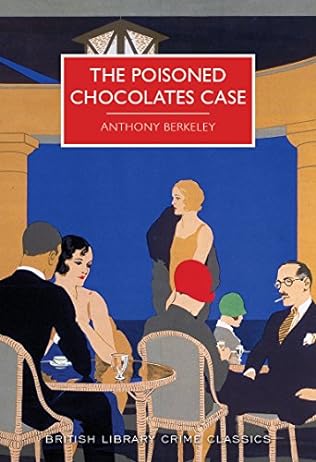A review of A Telegram from Le Touquet by John Bude – 240406
A Telegram from Le Touquet, originally published in 1956, has been recently reissued as part of the excellent British Library Crime Classics series. Taxonomically it is the twenty-second and penultimate in John Bude’s long-running William Meredith series, but, in truth, he plays only a minor albeit vital part in the tale. The heavy lifting in the investigation on the French Riviera is conducted by Inspector Blampignon of the Sûreté National, who featured in Bude’s earlier Death on the Riviera (1952).
The book falls into two unequal parts. The first part is narrated by Nigel Derry through whose eyes we are introduced to the main characters of the story and begin to understand the tensions and emotional undercurrents that are bubbling to the surface at his aunt Gwenny’s country house that Easter. To his astonishment his desire to marry Sheila, Gwenny’s ward, is vetoed without an adequate explanation. Gammon, an old soak and a beau of Gwenny’s, seems to be falling out of favour with a younger, more dapper Frenchman now in tow, and begins to make a beeline for Gwenny’s dowdy and naïve sister, Deborah Gaye. And there is some mystery surrounding the bohemian artist, Skeet, who seems to have some kind of hold on Gwenny and is involved in a knife fight with her latest beau, an occurrence that decides Gwenny to shut up the house at short notice and decamp to her holiday home in the south of France.
Gwenny never gets there. Her body is found in a trunk by her servants, the Fougères. To their surprise they had received a telegram from her advising them instead of arriving on the Sunday she would not reach the house until the Tuesday. Nigel also received a telegram, the eponymous missive from Le Touquet, inviting him unexpectedly to join his aunt. Some incriminating evidence that links him to her murder is found in a car.
The second part of the novel, which describes the events leading up to the discovery of the murder, the subsequent investigation and the revealing of the culprit, is narrated in the third party and, oddly, having done much to focus attention on Derry and to implicate him in the murder, Bude quickly absolves him of any involvement which, together with the switch of narrative focus, gives the book a very disjointed feel.
To add to the feeling of disappointment the culprit is easy to spot, although the locus of the murder and the herculean efforts required to get the body to the south of France show an astonishing degree of ingenuity. The motive, Gwenny’s hostility to the proposed marriage and Skeet’s hold over her are only revealed after a telephone call, the contents of which are not disclosed to the reader at the time but are pulled out of the chapeau with a Gallic flourish at the grand reveal. That the nuts and bolts of the crime are only revealed through a confession and the culprit suffers an all too convenient heart attack which eliminates any issues over which jurisdiction should deal with the murder adds to an overwhelming sense of anticlimax.
Blampignon is about as far removed from Poirot as you can imagine. Portly, sweaty, energetic, only uttering the occasional “Eh bien”, “Mon Dieu” and “Merde” to indicate his Gallic origin, his approach is less about engaging the little grey cells as rolling his sleeves up and getting stuck in. As he remarks at the end, the murderers only real mistake was to send that telegram. Had they not, they could easily have got away with murder.
The book is an entertaining enough read and the first part allows Bude to round his characters in the reader’s mind, but there are too many unsatisfactory features to make it a true classic.




